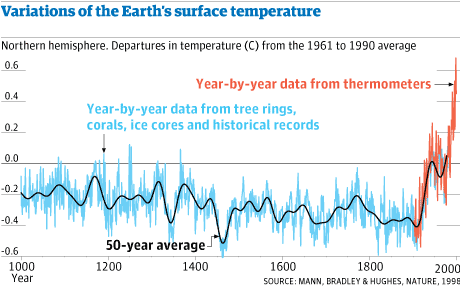My investigation so far has revealed much by the way of economic and political limitations, and I haven't even delved into the abyss that is international law yet.
International law is more complicated than one might think. What is international law anyway? How is it governed? Where is the higher power to enforce it? Does it even formally exist?
There are two types. International treaty law is probably better understood because it features regularly in the realm of climate change. It involves parties (typically states) ratifying an agreement and assuming obligation to the treaty. Alternatively, customary international law “consists of rules of law derived from the consistent conduct of States acting out of the belief that the law required them to act that way” (Rosenne, 1985, p55). Much of international law began this way with the formation of the League of Nations, and then the United Nations. For example, the Laws of War began as customary international law (Roberts, 2008). Over time many aspects of customary law have eventually been written into treaty law. The Laws of War were eventually written into the Hague Conventions of 1899 and 1907, then as part of the Geneva Convention (ibid).
Geoengineering is implicated in both types of law. It applies to international customary law because of the threat it poses to state sovereignty. The transboundary nature of geoengineering techniques means that they could affect the environment beyond the state of jurisdiction. In such a case, a balance between parties involved must be struck to allow certain testing or activities. International law plus all of the states involved must be applied, making for a complicated process (Proelss, 2012).
Regarding international treaty law, individual geoengineering technologies likely apply to multiple treaties and must adhere to all. Proelss (2012) offers the example of marine geoengineering. It must be assessed against the United Nations Convention for the Law of the Sea (UNCLOS), the United Nations Framework Convention on Climate Change (UNFCCC), the CBD and the London Convention and Protocol. At present, the international legal system doesn't have any legislation specific to the development and testing of geoengineering. This makes for a challenging process to decide which activities are legal or not.
Geoengineering has transboundary impacts, and it is intended to have global impacts. This places it in the realm of public international law (Proelss, 2012). There are ethical implications for its testing because the true impact of each method is so far unknown. Overall, Carbon Dioxide Removal (CDR) is met with fewer legal objections compared to Solar Radiation Management (SRM). This is likely because SRM techniques are generally more concerned with altering forcings and feedbacks of the climate system in ways that we cannot fully predict.
Law as a restricitive force against change
It is fair to say that international law is the ultimate power of restriction in scientific development and testing of geoengineering methods. Not only is it risk averse, but leading up to the present, it has only functioned largely to suit the needs of the current global population, rather than needing to plan for the long-term future. Furthermore, it is contradictory. I refer back to the example that I used in a previous post: space-based geoengineering schemes fall under the definition of "dangerous anthropogenic interference" by the UN Framework Convention on Climate Change (UNFCCC) as an activity that produces inadvertent climate effects (Robock, 2008). This conflicts with the call from COP21 to invest more heavily in geoengineering research. Furthermore, the Environmental Modification Convention (ENMOD) prohibits “military or any other hostile use of environmental modification techniques having widespread, long-lasting or severe effects as the means of destruction, damage, or injury to any other State Party.” Therefore, any space-based scheme that adversely impacts climate would violate the treaty (Robock, 2008).
To initiate progress, there is a need to define what negligible environmental impacts are in relation to geoengineering in international law (Blackstock and Long, 2010), or even what environmental impacts would be acceptable under the testing and development of geoengineering. A disagreement of these definitions is problematic for decision-making. In terms of perspective, Stilgoe (2015) argues for a new style of governance related to geoengineering - collective experimentation. The aim of this concept is to turn geoengineering from a 'noun' to a 'verb'. He proposes reassigning language currently used to discuss geoengineering to a more positive and productive approach. Currently we view its uncertainties as limitations. Stilgoe wants to reimage these uncertainties as potential, and for the public to participate positively in this experimentation. Aspirational, but unlikely to be embraced, in my opinion.
As an aside: can a resolution really emerge from a democratic system? Stilgoe (2015) states how democracy is not sufficient enough to instil the changes that we need with immediate effect to manage or manipulate climate change. A environmental discourse of climate change requires a totalitarian approach for efficient decision-making. However, I argue that human civilisation in the long-term may require this approach too. Democracy rightly has moral and civil importance for the present population, but this also serves as its downfall. International and domestic politics, despite preaching sustainability, often look no further than the present generation. Democracy functions to meet the beliefs of the majority, not necessarily the needs, and can therefore remain stagnant, particularly when little progress can be made with such short terms of modern leadership. Therefore I don't believe that it is compatible with the demands of a rapidly changing climate.
The rule of law dictates that scientific uncertainty is grounds for restricting the progress of geoengineering. Uncertainty will never disappear. Perhaps uncertainty needs to be redefined to become unstuck?
Law is quite frankly mind-boggling, and I am certainly no lawyer, so I want those better informed than me to offer their opinion. Have I over-simplified? I have only been able to see the restrictions of law to progress with managing climate change, I'd love to find out if there is another side to the story too.














